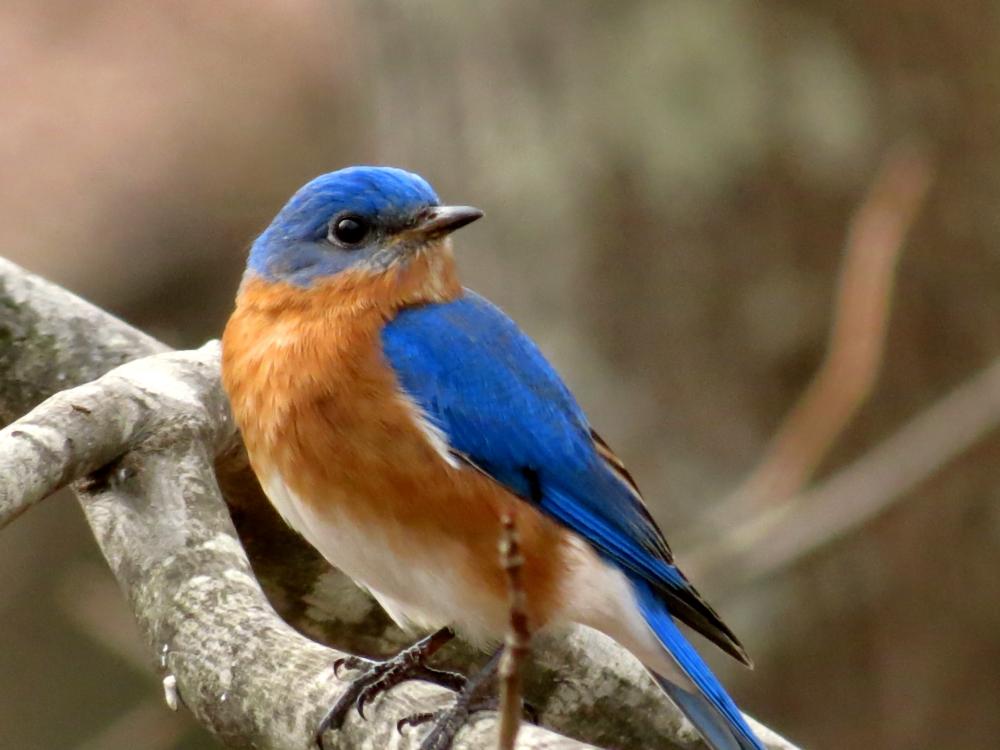SCIENTIFIC NAME:
Sialia sialis
STATUS:
Breeder. Common in all seasons and regions. Lowest Conservation Concern.
DESCRIPTION:
The Eastern bluebird (Sialia sialis) is a small thrush size bird standing only six to eight inches tall and weighs about 1 ounce. They have a wingspan of 10 to 13 inches with no noticeable size difference between sexes. Males have a dark blue tail and wings with a bright reddish colored chest. Females are drab grey-blue with a duller reddish chest. Immature birds will be speckle breasted and grayish in color but will have the defining blue on the wings and tail. Both sexes will have a white lower belly and undertail.
DISTRIBUTION:
Eastern bluebirds are common and range from southern Canada to the Gulf of America and east of the Rocky Mountains. They are also found in southern Arizona through central Mexico to northern Nicaragua.
HABITAT:
The Eastern bluebird is a territorial bird that prefers open grassland habitat with scattered trees and farms. Bluebirds are often seen in orchards and golf courses. They require cavities for nesting but will readily use artificial nest boxes placed in backyards of residential areas.
FEEDING HABITS:
Eastern bluebirds feed mostly on grubs, worms, insects and small fruits. They will utilize backyard bird feeders of the platform type filled with meal worms which are the larval form of the darkling beetle. They usually hunt from a perch and swoop to the ground to capture prey.
LIFE HISTORY AND ECOLOGY:
The Eastern bluebird population was in decline in the 1960s and 1970s due to nest cavity competition with non-native species such as the European starling and house sparrow. With the help of nest box campaigns, populations are now increasing throughout most of its range. Male bluebirds attract females by selecting a nest site and flapping their wings while perched above. They place nest material inside the nest cavity in hopes of attracting a mate. After pairing, the female builds the entire nest and incubates the eggs. The clutch size varies upon location and increases in size as you move north and west throughout their range. Eggs are pale blue with no markings and are incubated by the female for 11 to 19 days. Renesting is common with some pairs having as many as four successful broods. Chicks fledge in 17 to 19 days and broods born early in the year leave the parents while later born broods stay throughout the winter.
REFERENCES:
Gowaty, P. A., and J. H. Plissner. 1998. Eastern Bluebird (Sialia sialis). In The Birds of North America, No. 381 (A. Poole and F. Gill, eds.). The Birds of North America, Inc., Philadelphia, PA.
Peterson, R.T. 1980. Peterson Field Guide (Eastern Birds). Houghton Mifflin Company, Boston, MA.
AUTHOR:
Adam Pritchett, Wildlife Biologist, Alabama Division of Wildlife and Freshwater Fisheries
ADDITIONAL RESOURCES:






